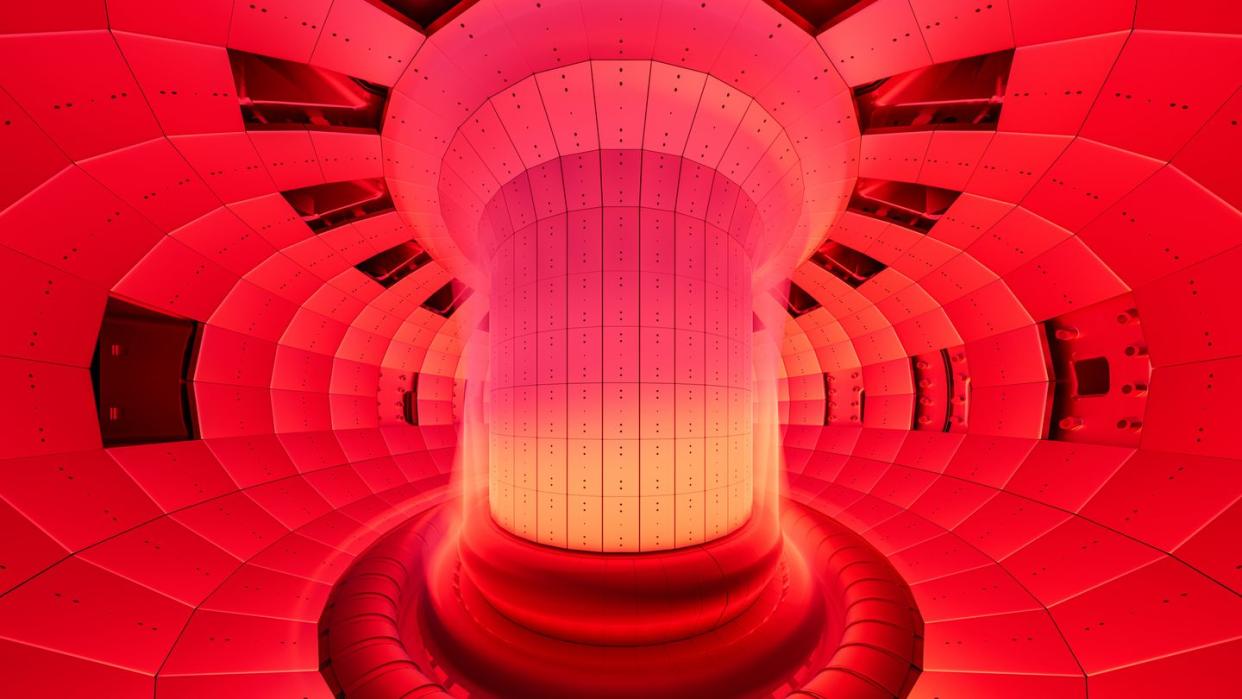Korea’s Artificial Sun Just Shattered a Fusion Record

One of the hardest things in magnetic confinement fusion is containing plasma long enough to induce a fusion reaction.
The Korea Superconducting Tokamak Advanced Research (KSTAR) reactor successfully contained plasma for 48 second—18 seconds longer than its original record.
This improvement in containment comes from improved materials (such as a new tungsten invertor), as well as optimization models that helped avoid common plasma instabilities.
As the world eagerly awaits the International Thermonuclear Experimental Reactor (ITER)—the most ambitious nuclear project in human history—to achieve first plasma in late 2025, lots of tokamaks around the world are breaking fusion records like never before.
And one of those stars-in-a-bottle is the Korea Superconducting Tokamak Advanced Research (KSTAR) reactor in Daejeon, South Korea. In September of 2022, the KSTAR team wow’d the world when they successfully contained 100 degrees Celsius plasma (which is seven times hotter than the sun) for 30 seconds—not enough to generate the bootstrapping fusion needed to create energy, but an impressive feat nonetheless. But between now and then, the KSTAR reactor received a major upgrade by getting its carbon divertor switched out for a tungsten one. Thanks to this improvement, along with additional advancements in heating and controlling the plasma, KSTAR just broke its old record by a full 18 seconds.
“Despite being the first experiment run in the environment of the new tungsten divertors, thorough hardware testing and campaign preparation enabled us to achieve results surpassing those of previous KSTAR records in a short period,” Center Si-Woo Yoon, director of KSTAR Research, said in a press statement. “To achieve the ultimate goal of KSTAR operation, we plan to sequentially enhance the performance of heating and current drive devices and also secure the core technologies required for long-pulse high performance plasma operations.”
Divertors are incredibly important components in tokamaks—they’re a lot like a nuclear exhaust port that removes heat and helium ash from plasma. Because the divertor faces the ultra-hot plasma directly, it’s vital that it can withstand the heat flux of such a torturously hot environment. The previous carbon-based divertor worked well due to its high melting point, but tungsten’s larger atomic mass and high melting point means it’s much less likely for plasma particles to get stuck to its surface.
Because of this extra capability, tungsten will also be the material of choice for ITER. This will allow the KSTAR reactor will provide valuable data for both ITER and projects beyond, like the Demonstration Power Plant (DEMO)—ITER’s fusion successor.
“This research is a green light for acquiring core technologies required for the fusion DEMO reactor,” Suk Jae Yoo, Korean Institute of Fusion Energy (KFE) president, said in a press statement. “We will do our best to secure core technologies essential for the operation of ITER and the construction of future DEMO reactors.”
Of course, 48 seconds is only the beginning of KSTAR’s ambitions. Earlier this year, the research center set a goal of reaching sustained plasma containment for 300 seconds (10 times its original record) by 2026. That goal will likely be achieved with material advancements (such as the tungsten invertor), but also through error-field optimization models that improve stability both in the center and at the edges of plasma. KSTAR’s partner, the Princeton Plasma Physics Laboratory, successfully controlled for “tearing mode” instabilities in the DIII-D experimental fusion reactor in San Diego last month—a technique that appears to have proved successful in the KSTAR reactor as well.
For decades, fusion has been the technology of the future, but laboratories like KSTAR and eventually ITER are starting to show that the future is now.
You Might Also Like

